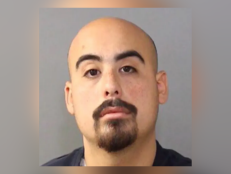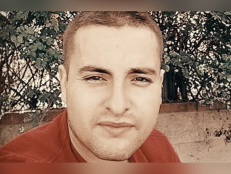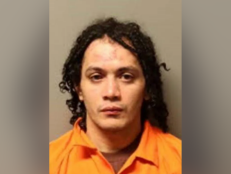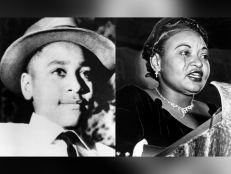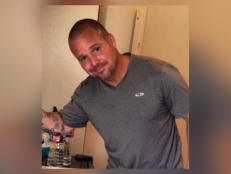Born To Raise Hell: 5 Things To Know About Richard Speck & The Chicago Nurse Murders
One by one, Richard Speck led the nurses from the room where he had tied them up with bedsheets to another room where they were strangled or stabbed to death. He methodically and brutally killed eight nurses that night.
![Mug shots of Richard Speck [Dallas Police Department]](http://investigationdiscovery.sndimg.com/content/dam/images/investigationdiscovery/crimefeed/legacy/2019/07/Richard-Speck-Dallas-Police-Department-7122019.jpg.rend.hgtvcom.616.411.suffix/1562877681115.jpeg)
Richard Speck [Dallas Police Department]
On July 13, 1966, there was a mass murder so shocking that it left an indelible mark on the American psyche. A 24-year-old drifter with a history of petty crime convictions descended on a townhouse on the South Side of Chicago, filled with alcohol and rage, and unleashed an almost incomprehensible fury on the group of nurses who lived there. The following morning, eight student nurses were dead and a manhunt was underway for the murderer, an unknown young man with a pockmarked face, a Southern drawl, and a blank stare. Here are five things to know about Richard Speck.
1. Richard Speck had a troubled past and a rap sheet a mile long.
Richard Speck was born on December 6, 1941, the day before the attack on Pearl Harbor. Until he was six-years-old, he lived a fairly normal life in a small town in Illinois. When his father suddenly died, things took a turn for the worse. His mother married a hard-drinking, abusive man, and the family relocated to Dallas, constantly moving to different parts of poor neighborhoods around the city. Speck was a bad student who dropped out of high school, developed a drinking habit, and embarked on a life of petty crime.
During his time in Dallas, Speck was arrested 41 times for crimes ranging from burglary to writing hot checks. He spent many nights in jail and almost two years in the penitentiary. His probation officer described him this way: “When Speck is drinking, he will fight or threaten anybody — as long as he has a knife or gun. When he’s sober or unarmed, he couldn’t face down a mouse.”
At the age of 24 in March 1966, Speck left Dallas because he had robbed a store and police had issued a warrant for his arrest. He ended up in Monmouth, Illinois, where he had lived as a boy and where he still had family. He only stayed there a short time when he decided to leave for Chicago because he was the main suspect in the murder of a local woman.
2. The night of terror shocked the nation.
Speck ended up in Chicago in April 1966 to live with his sister. His brother-in-law thought it would be a good idea for Speck to join the Merchant Marines as an apprentice seaman. He spent a short time working on ships on the Great Lakes, but was kicked off after fighting with a ship’s officer only a couple of months later in June. By this point, Speck’s frustration and anger at his lot in life were reaching a boiling point.
On July 12, Speck traveled to East Chicago, Indiana, where he thought he had a job on a ship. Speck became angry after learning that the job was given to another seaman with more seniority. He returned to Chicago and was dropped off near the National Maritime Union Hall on E. 100th Street so he could inquire about another job. The union hall was closed, however, and Speck spent the night sleeping outside. A few buildings west of the union hall was 2319 E. 100th, a townhouse where students nurses lived. Speck was seen near the townhouse more than once on July 12 and July 13.
The next day, July 13, 1966, Speck rented a room at the Shipyard Inn for a week, intending to wait for a job to come up at the union hall. He spent the day drinking in taverns near the Shipyard Inn, about a mile and a half from the union hall and the townhouse where the nurses resided. During the day, Speck forced a 53-year-old woman to go to his rented room, where he raped her and stole her handgun. Speck then spent the rest of the night drinking at the tavern at the Shipyard Inn, at one point pulling the gun he had just stolen on a man he had a small argument with. After getting drunk and building up his courage, Speck left the bar and walked west on E. 100th Street.
Around 11 P.M. that night, Speck, armed with a hunting knife and a pistol, broke into the two-story townhouse in the Jeffrey Manor neighborhood on Chicago’s far South Side. Nine student nurses who worked at South Chicago Community Hospital lived in the residence. Speck made his way upstairs and confronted the six women who were home at the time, herding them into a single bedroom. He told them he was not going to hurt them, that he only wanted money to get to New Orleans. The other three young women who resided there returned to the townhouse after Speck’s break-in — so now all nine student nurses were trapped with a madman.
It was at this point that Speck began killing the women. One by one, he led them from the room where he had tied them up with bedsheets to another room where they were strangled or stabbed to death. Speck methodically and brutally killed eight nurses that night. The victims were: Pamela Lee Wilkening, 20; Mary Ann Jordan, 20; Suzanne Bridget Farris, 21; Nina Jo Schmale, 24; Patricia Ann Matusek, 22; Gloria Jean Davy, 22; Valentina P. Pasion, 23; and Merlita Ornedo Gargullo, 23.
But Speck made one enormous error during his night of mass murder….
3. He left an eyewitness.
Speck spent roughly five hours in the townhouse, murdering the eight young women and raping at least one of them. Speck was so wrapped up in his murder frenzy that he forgot that a ninth woman, 23-year-old Corazon Amurao, an exchange nursing student from the Philippines, had taken refuge under a bunk bed, hiding from the killer while he was in another room with one of his victims.
Amurao hid under the bed until she was sure the intruder was gone, untied herself, pushed a window screen out and stood on a ledge screaming, “They are all dead!” into the morning.
The scene that greeted police was unimaginable. Eight young women in the primes of their lives snuffed out by a mysterious maniac who'd disappeared into the night. Amurao described the killer in detail to investigators: six feet tall, blond hair, 160 pounds. She also said the man had a Southern drawl. Amurao then worked with a police sketch artist to come up with a drawing of the man to be distributed all over Chicago. Detectives settled on Speck as the suspect after canvassing the neighborhood and finding out about an irate seaman at the union hall. The cops now had a name: Richard B. Speck.
4. Speck was finally nabbed by police partly due to a distinctive tattoo on his arm.
Authorities now had his name, description, and a list of his tattoos from his various arrests. The most notable tattoo was on Speck’s left forearm: It read “Born to Raise Hell.” While police were trying to track down Speck, he ended up on Chicago’s North Side, miles from the scene of the crime. He then retreated to Skid Row where he checked into a flophouse hotel. He found a companion named Claude Lunsford and the two drank on the fire escape of the Starr Hotel. On July 16, three days after the murders, Lunsford recognized a photo of Speck in the newspaper and that evening called the police, who did not respond.
Speck’s name and photo were plastered on newspapers and TV stations across the country; he was the most wanted man in America. Speck knew time was running out. Despondent, he slashed the inside of his elbow and his right wrist and lay down in a bed in Claude Lunsford’s room at the Starr Hotel, waiting to die. Speck was discovered bleeding to death and an ambulance was called. He was taken to Cook County hospital under the name “B. Brian” that Lunsford had registered under at the hotel. But as the doctor on duty was attending to the young man who had tried to kill himself, he thought his patient looked familiar. The doctor had just seen Speck’s photo in the newspaper while on his dinner break. As the doctor began to remove the caked blood from the patient’s arm, he noticed a tattoo slowly come into form. The shocked doctor soon realized that the tattoo said “Born to Raise Hell.” There was no doubt now that the man who had attempted suicide in the hotel room was the suspect that every police officer in Chicago was looking for.
5. His life in prison was incredibly bizarre.
Lone survivor Corazon Amurao took the stand in court and gave a harrowing account of the events of that awful night. Speck had also left fingerprints at the murder scene, which helped seal his fate. Speck received the death penalty at the conclusion of his 1967 trial. But the death penalty was declared unconstitutional in 1972, so Speck was re-sentenced to life in prison. He never showed any remorse for his terrible crimes. Richard Speck died in prison on December 5, 1991, a day before his 50th birthday.
That seemed to be the end of the Richard Speck story until a bizarre videotape surfaced in 1996. The video, apparently filmed in prison in 1988, showed Speck wearing panties, snorting cocaine, and performing sex acts on a fellow prisoner. Speck had been taking female hormones behind bars and had grown breasts. In the video, Speck said, “If they only knew how much fun I was having in here, they would turn me loose.” The video sparked controversy and was a major embarrassment for corrections officials in Illinois.
For more on Richard Speck, watch the “And Then There Was One” episode of Investigation Discovery’s A Crime to Remember on ID GO!
Read more: NBC News, Free Republic, The Chicago Tribune, AP, AP (2), Murderpedia, WGNTV, The Crime of the Century by Dennis L. Breo, William J. Martin
